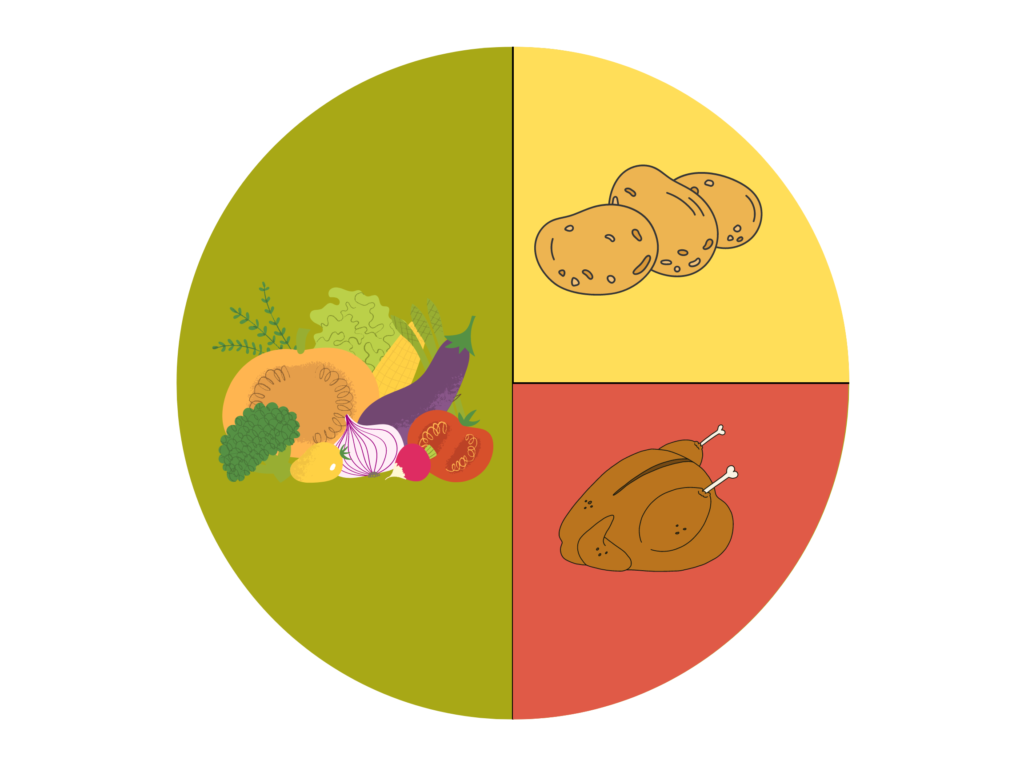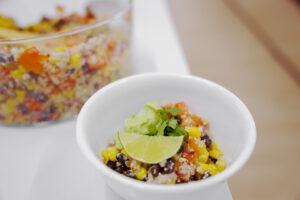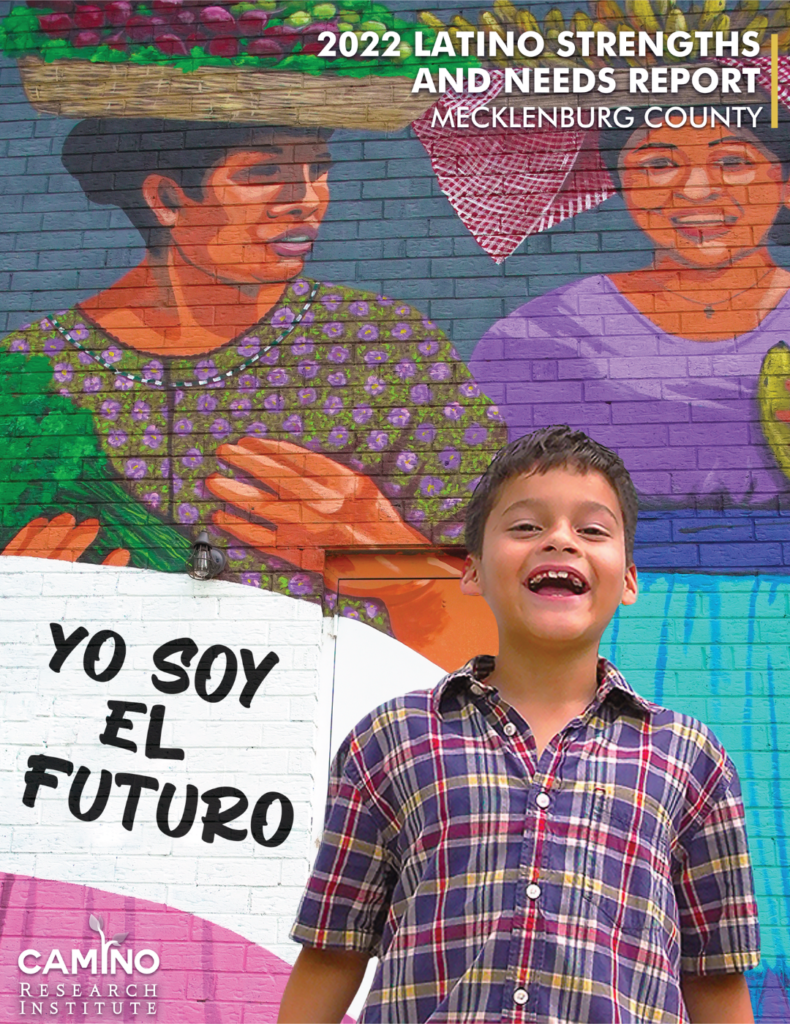Did you know that November is National Diabetes Month? That’s right, the month built around Thanksgiving and endless holiday meals is also a time when healthcare institutions across the country bring attention to the growing concern of diabetes. This year, in honor of National Diabetes Month, I spoke with staff members at Camino Vida, our Health Education and Wellness Program, to gain a better understanding of what diabetes is, how Camino Vida addresses the disease, and what individuals can do to reduce their risk of diabetes. It is important to note that for the purpose of this blog, we focus primarily on type 2 diabetes (T2DM). Let’s begin by discussing what Camino Vida is.

What is Camino Vida?
Camino Vida is our Health and Wellness Program at Camino Health Center that offers individualized and culturally-competent nutrition, exercise, and wellness plans to help their patients overcome/manage their chronic health conditions, including diabetes. “We focus on improving their quality of life through healthy eating and physical activity,” said Paulina Martínez, Director of Camino Vida. Currently, the program is staffed with three fully-bilingual employees, including a Registered Dietician and a Fitness Specialist. Staff members at Camino Vida are qualified and experienced professionals who help and educate their patients about their health and well-being. Patients are referred to the program directly from Camino Clinic, our primary care clinic.
What is diabetes?
Whenever you consume something, the body breaks down food and converts it to sugar. This sugar is then released into the bloodstream. When sugar accumulates in the bloodstream, the pancreas releases insulin, which turns the blood sugar into cells to use as energy. According to Martínez, diabetes is a chronic health condition where the body doesn’t make enough insulin or can’t use it as it should. For T2DM specifically, the body doesn’t use insulin properly and has a hard time keeping levels of sugar in the blood at normal levels. Whenever too much sugar accumulates, it can cause heart disease, vision loss, kidney disease, and leg/foot ulcers. Martínez says that common risk factors for T2DM include having prediabetes, being overweight, being older than 45, having a family member with T2DM, living a sedentary lifestyle, or getting gestational diabetes (DM during pregnancy). Additionally, African Americans and Hispanics are also at higher risk. She emphasizes the fact that T2DM can be prevented or delayed when practicing a healthy lifestyle – having healthy eating habits and a regular exercise routine.
Camino Vida: A conversation with the Nutrition Program Manager
As mentioned earlier, Camino Vida has a bilingual Registered Dietitian, Reatna Taylor, who serves as the Nutrition Program Manager. She mainly focuses on one-on-one nutrition consultation with her patients. She also facilitates nutrition education & cooking classes, as well as an eight-week nutrition program. Taylor was kind enough to walk me through how one’s eating habits play a significant role in the health of someone with diabetes. As we talked about the different foods people consume throughout their day, we covered food options people with diabetes should and should not eat or at least limit. Taylor emphasized the idea that refined carbs, or overconsumption of refined carbs, can make it harder for your body to manage blood sugar over time. Refined carbs include foods such as cakes, cookies, pastries, pasta, and pretty much anything that has been heavily processed. Most of the time, she advises people to choose complex carbs over refined carbs. Some examples of complex carbs include, but are not limited to:
- Beans
- Oatmeal
- Quinoa
- 100% whole grain bread
- Potatoes/Sweet potatoes
- Barley
She also says that the overconsumption of sugary drinks, including sodas, Gatorade, juices, etc., can increase your risk of diabetes over time and recommends prioritizing water. At the end of the day, Taylor says that consistent healthy eating habits are the key to a healthy lifestyle because these habits can decrease your risk of diabetes, and consistency is what makes the difference over time. According to Taylor, an easy way to practice better eating habits is to adopt the Myplate Method when plating your meals. The MyPlate Method was designed to help individuals choose proper portions during their meals. See the image below for an example of this method:

For Taylor’s patients, she focuses on identifying their current eating habits and determining what improvements/changes can be made to help them lead healthier lifestyle. For the best advice for healthier eating, Taylor recommends seeking out help from a Registered Dietitian. The main takeaway from the conversation with Taylor – a balanced diet that is not too strict is a great way to practice healthy eating habits and reduce your risk of diabetes.
Camino Vida: A conversation with the Fitness Specialist
So far, we have covered what diabetes is and how nutrition and eating habits play a role. Now we are going to go over how exercise plays a role. I spoke with Steve Marin, Camino Vida’s Fitness Specialist, to gain a better understanding of the relationship between exercise and diabetes. According to Marin, whenever you are active, your cells become more sensitive to insulin, and they work more effectively to convert blood sugar to energy, lowering your blood sugar levels. Whenever Marin has a patient referred to the program, he first assesses their current physical health by asking them to perform basic movements. He also asks them how long they have gone without exercise and if they have any restrictions on movement. Based on their individual needs and specific goals, he develops a realistic workout plan for them.
For those who are unable to come to Camino Vida, he recommends finding some form of physical activity that you enjoy and performing it at least three times a week or as often as you can. He emphasizes that consistency is key. You want to pick an exercise that you can do consistently over time. “The changes they are looking for are not changes that will happen overnight,” said Marin. “If your goal is to exercise seven days a week, you might find yourself burnt out after the first week, but if your goal is to workout three times a week, that is much more realistic, and you could be more likely to stick to that routine.” The main takeaway from Marin – as long as you are keeping the body active regularly, you can lead a healthy lifestyle and lower your risk of diabetes.
Camino Vida is dedicated to equipping their patients to live healthy lives. Although this blog focused primarily on diabetes, the program assists patients dealing with many other chronic conditions, including hypertension, obesity, metabolic syndrome, etc. Through their dedication, Paulina Martínez, Reatna Taylor, and Steve Marin have helped many patients achieve a healthier lifestyle. If you require assistance or want to learn how to become a member of the program, contact our clinic today at 704.596.5606.







